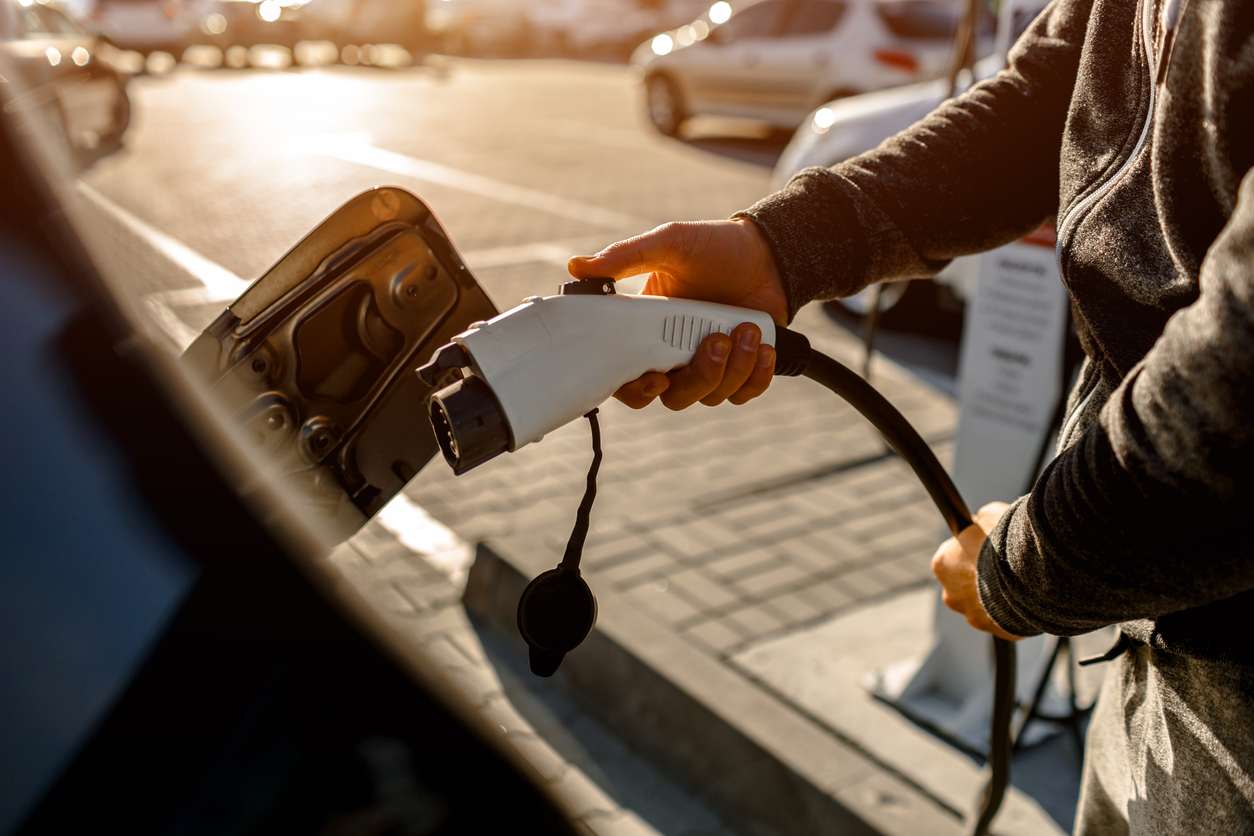Guide to recharging electric cars and vans
Recharging an electric car or van can be a very different experience when switching from a petrol or diesel vehicle. Follow our guide for a perfect plug-in experience
Plugging in is part of everyday life, but when it comes to electric vehicles the whole experience can feel a bit daunting at first.
There are different types of connectors, varying charging speeds and different terms to grapple with, along with charging stations that feel very different to a petrol and diesel pump.
The good news is that once you have recharged a few times it will become second nature, just like plugging in a mobile phone, but to get started here is a guide answering some of the key questions drivers might have.
Charging overview
The easiest way to think about how recharging works is to compare it to filling something with water.
You can get different speeds of charger, from a hosepipe to a fire hose, and different sizes of battery, from small (a bucket) to the very large ones you might find in a Tesla or Porsche (a swimming pool).
To fill the bucket, a hosepipe is fine. However, try to fill the swimming pool with a hosepipe and you would be there for days.
When recharging your car or van battery, the same principle applies. Different charging options will deliver different flows of energy suited to individual batteries. They will also limit their charging speed to what your car can accept to protect the battery.
Types of charging
How fast you can charge depends on the type of cables providing the electricity, in addition to what your battery can cope with.
At home, your house is wired for domestic demand, so there is only a certain flow of electricity it can provide.
You can plug a charger provided with your car into a three-pin socket. However, this is the equivalent of using a watering can rather than a hosepipe. A home wallbox allows a greater flow of power into the vehicle.
It is possible to upgrade your electricity supply to deliver even more power (called three phase electricity), but this will involve specialist installation of wiring and charging equipment.
In most cases the car will be charged overnight, so slower speeds will be generally acceptable to cover average daily mileages.
Public charging options range from the equivalent of a home wallbox, for example in the car park of the local pub, through to the new and growing network of specialist stations that can charge large batteries in an hour.
Most modern electric cars are designed to adapt to all forms of charging, although their batteries will restrict the speed of recharging to avoid any damage or overheating. Some plug-in hybrid cars only accept slow charging.
To use the water analogy again, if you were trying to fill a bucket with a firehose, the car would limit the flow to the amount it could accept safely.
The technical terms for the different types of charger are:
Type 2, which provides slow or reasonably fast charging
CHAdeMO or CCS, which provide rapid charging
You can’t mix up the chargers, as they are different shapes. The Type 2 plug is circular with seven ‘pins’, while the rapid charger has up to nine, which normally requires the removal of a plastic cap in the charging port before it can be plugged in.
The charging process
Just like a petrol or diesel car, you start ‘fuelling’ with the ignition off.
For a three-pin plug, you would use the charging cable provided with the vehicle to plug into the socket first, then attach the cable to the car. This is the slowest option and won’t add much charge, even overnight.
For a wallbox, which normally has a cable attached, you just plug into the car.
For public charging points, you may need to swipe a membership or payment card before plugging into the car. There are normally screens to guide you through the process.
Once you plug in, there is normally a beep or a click to confirm charging is taking place, often accompanied by a green light, which may take a few seconds. If you have a smartphone app, this will also confirm if charging has started.
Once charging has initiated, it is possible to use vehicle functions, but it will slow down charging, particularly if you use air conditioning or heating.
The connector may be locked in place during charging, so when you want recharging to end you may need to press a button, either on the charger or in the car.
Charging speeds
As mentioned above, charging speeds are defined both by what the cable can provide and what the car can accept, but there are some general rules.
The easiest way to think about charging speeds is based on how many miles of range are added per hour of charging (see table below).
This is only a general indication, as batteries don’t charge in a linear way. For example, charging from 20-80% is much quicker than 80-100% as the battery restricts the flow of energy to prevent any damage.
Electric vehicles are generally compatible with the 50kW rapid charging network, but some cars are now designed to accept much higher charging speeds, while some PHEVs heavily restrict charging levels.
Any car will restrict charging to what the battery can take. For example, it could restrict a 150kW charger to 50kW. Charging speeds will also fluctuate during the charging process.
Typical charging speeds per hour of charging
| Type of charger | Typical range added per hour of charging |
| Domestic | |
| 3-pin socket | 1-3 miles |
| 3.7kW wallbox | 12 miles |
| 7kW wallbox | 25 miles |
| Public | |
| 50kW | 75 miles |
| 150kW | 180-225 miles |
| 250kW | 500 miles (Tesla supercharger network) |
| 350kW | 525 miles |
EV charging rules
As electric vehicles become more popular, there are simple rules to avoid problems.
Be prepared – When leaving on a journey, make sure you have your cables and have planned any potential charging stops in advance. Check your vehicle’s charging capabilities and charger type in the handbook. It also pays to download any smartphone apps beforehand. Resources such as Zap Map provide loads of information about charging networks and every car’s charging capabilities.
ICE-ing – If you drive a petrol or diesel car, don’t park in an EV charging bay. It is the same as using a petrol pump as a parking spot.
Don’t overcharge – With limited charging bays, you should only take as much charge as you need so you can free up the space for someone else if it’s busy. Bear in mind that charging to 100% takes much longer than an 80% charge, so consider if you really need a completely full battery to complete your journey. Only choose fast chargers if your car is compatible, otherwise the car will just restrict charging speeds to what the battery can cope with.
Bay blocking – Don’t occupy the space once your charge is complete – charging bays aren’t meant as free parking. Make use of smartphone apps to keep you updated, as networks can impose additional charges if you don’t unplug and move on.
Queue jumping – There are no queueing facilities at charging stations, so be aware of people waiting before moving into a bay. Someone may have been waiting an hour for it to become free, so play fair and keep the EV community nice and friendly.
For advice and guidance on your electric vehicle strategy, contact our team of experts or review our Guide to Electric Vehicles.
For details on the wealth of vehicles available on flexible terms from Reflex Vehicle Hire, review our Vehicle Selection page.
Share to:
Find out more
Find out how Reflex Vehicle Hire can help your company.
Call 0330 460 9913 or visit our contact us page.







@2x.png)

